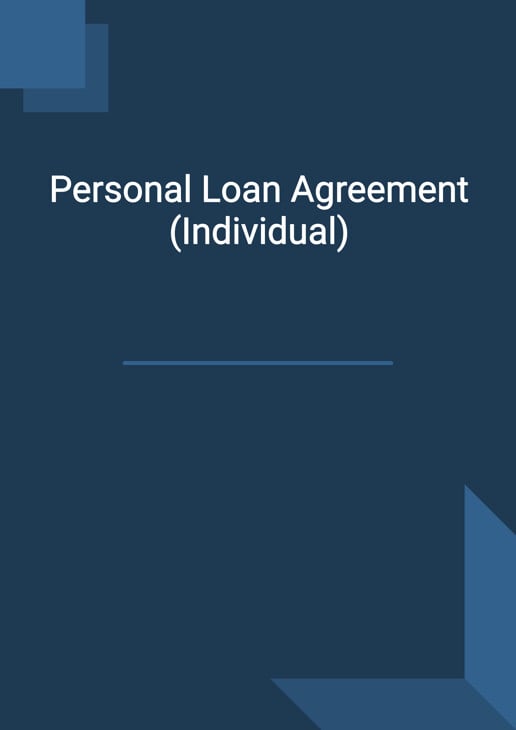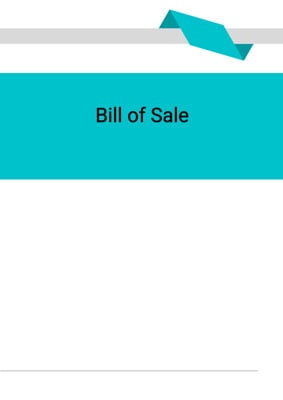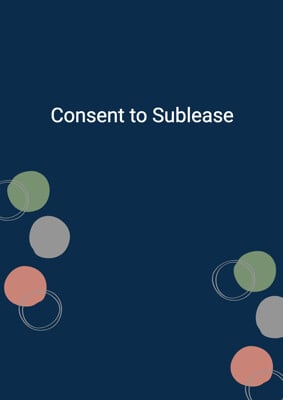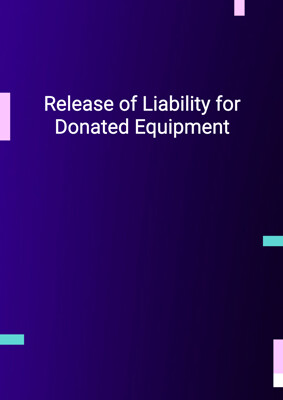How to Tailor the Document for Your Need?
01
Create Document
Fill in the details of the parties. You can click the "Fill with Member’s Information" button to complete it with information saved to your account.
02
Fill Information
Please fill in any additional information by following the step-by-step guide on the left hand side of the preview document and click the "Next" button.
03
Get Document
When you are done, click the "Get Document" button and you can download the document in Word or PDF format.
04
Review Document
Please get all parties to review the document carefully and make any final modifications to ensure that the details are correct before signing the document.
Document Preview
Document Description
A personal loan agreement is a legally binding document that establishes the terms and conditions between two parties, generally a borrower and a lender. It can be used in a wide variety of settings, such as personal lending between friends/family, business transactions, borrowing for down payment, etc. A personal loan agreement usually includes detailed information about the borrower and lender, loan amount, interest rate, repayment schedule, dispute resolution, etc.
This agreement is very important in two senses. Firstly, a well-crafted loan agreement can facilitate transparency, trust and financial accountability. With a clear framework for managing their debt, it can empower borrowers to effectively manage their financial resources and make strategic decisions that align with their long-term business goals. Secondly, a loan agreement allows parties to tailor the terms to their specific needs and circumstances. Particularly from the borrowers’ perspective, they can ensure that the agreement is in line with their financial capacity.
A loan agreement, as a formal contract, is slightly more comprehensive than a promissory note, which is merely a written promise. A loan agreement usually covers various aspects beyond repayment, such as late payment penalties and default consequences. Also, more legal clauses such as amendment of contract, entire agreement and governing law and jurisdiction, are included for the sake of formality. In general, the lender would charge interest in line with the prevailing market, with reference to the amount permitted by the respective state laws.
The entire document is divided into several sections, each serving a specific purpose. The interpretation section (Section 1) provides definitions for key terms used throughout the agreement, ensuring clarity and understanding. Section 2 outlines the loan amount and the lender's agreement to advance the loan to the borrower. Section 3 details the process of loan advance, specifying the date and amount of each advance.
Section 4 focuses on the interest terms of the loan. It explains that the borrower is required to pay interest on the principal outstanding, calculated at the agreed interest rate. It also states that any unpaid interest will accrue and become payable on each interest payment date. Additionally, it mentions the borrower's option to make larger payments or repay the loan in full before the prescribed dates of payment.
Section 5 addresses the repayment of the loan. It states that the borrower is obligated to repay the principal outstanding and any other amounts payable. The repayment date is determined based on the agreement between the parties. If the loan is repaid on time, the repayment date is mentioned. Otherwise, if the loan is not repaid, the section still emphasizes the borrower's responsibility to repay the loan.
Section 6 specifies the payment and tax terms. It states that all payments should be made to the lender's designated address during business hours, without any deductions or set-offs. The currency for payment is also mentioned.
Section 7 covers late charges and default. It explains that any payment not remunerated within 10 days of its due date will be subject to a late charge. In case of default, where the borrower fails to pay the full amount of the loan when due, the lender will charge interest on the unpaid balance.
Section 8 addresses the lender's rights in the event of the borrower's insolvency. It states that if the borrower becomes insolvent, the lender may demand immediate repayment of the loan and any other unpaid amounts.
Section 9 emphasizes the severance provision, which states that any invalid or unenforceable provision of the agreement will be read down or severed without affecting the remaining provisions.
Section 10 introduces the indemnity clause, where the borrower agrees to indemnify the lender against any loss incurred due to taxes payable by the borrower or any payment default.
Section 11 covers the costs associated with the agreement. It states that the borrower is responsible for paying the lender's costs and expenses, including legal costs, and all stamp duties, fees, taxes, and charges related to the agreement.
Section 12 addresses the application of money received by the lender from the borrower. It states that the lender has the discretion to apply the received amounts to the borrower's liabilities in the manner and sequence it decides.
Section 13 outlines the notice requirements for the agreement. It specifies that any notice or communication should be in writing and provides options for delivery methods, including personal delivery, postal mail, or facsimile.
Section 14 includes miscellaneous provisions, such as the requirement for any waiver or variation of the agreement to be in writing, the exclusion of legislation that may vary the borrower's obligations, and the cumulative nature of the rights and remedies provided by the agreement and the law.
Section 15 clarifies that the agreement does not grant any rights to third parties to enforce its terms.
Finally, Section 16 states the governing law and jurisdiction for the agreement.
Each section of the document serves a specific purpose and contributes to the overall clarity and enforceability of the loan agreement.
How to use this document?
To use the Personal Loan Agreement (Individual) effectively, follow these steps:
1. Review the entire agreement to understand its terms and conditions.
2. Ensure that all the necessary information is accurately filled in, including the names of the lender and borrower, the loan amount, and the interest rate.
3. Specify the loan repayment schedule, including the dates and amounts to be repaid.
4. Determine the interest payment dates and calculate the interest accrued on the principal outstanding.
5. Agree on any additional terms, such as early repayment options or penalties for late payments.
6. Sign and date the agreement, ensuring that both parties have a copy.
7. Make all payments to the lender as specified in the agreement, without any deductions or set-offs.
8. Keep track of the repayment dates and ensure timely repayment of the loan.
9. In case of any changes or disputes, communicate with the other party in writing and follow the notice requirements mentioned in the agreement.
10. Comply with all applicable laws and regulations related to the loan agreement.
Following these steps will help you effectively use the Personal Loan Agreement (Individual) and ensure a smooth and legally binding loan transaction.
Not the right document?
Don’t worry, we have thousands of documents for you to choose from:


















